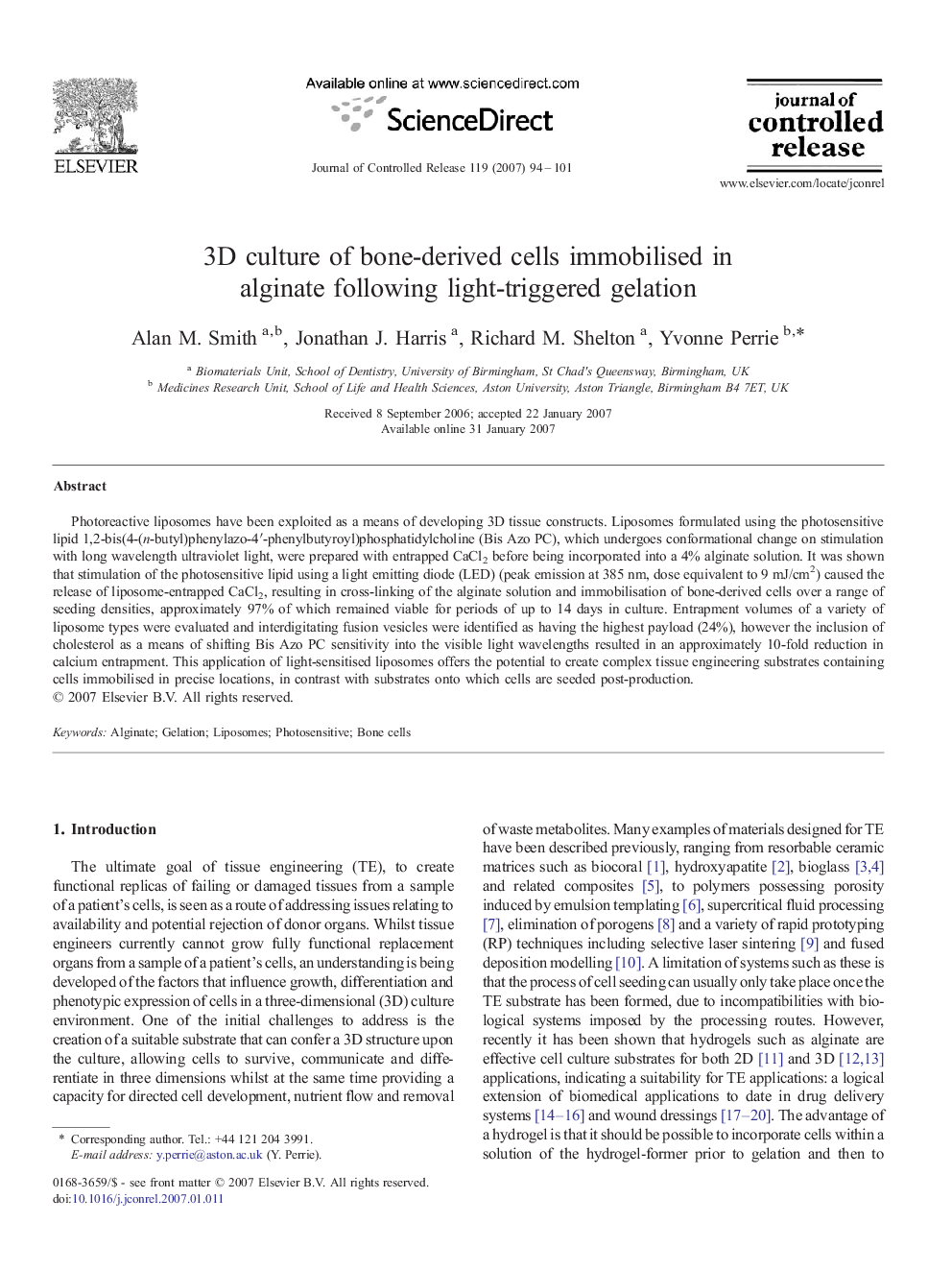| Article ID | Journal | Published Year | Pages | File Type |
|---|---|---|---|---|
| 1427597 | Journal of Controlled Release | 2007 | 8 Pages |
Photoreactive liposomes have been exploited as a means of developing 3D tissue constructs. Liposomes formulated using the photosensitive lipid 1,2-bis(4-(n-butyl)phenylazo-4′-phenylbutyroyl)phosphatidylcholine (Bis Azo PC), which undergoes conformational change on stimulation with long wavelength ultraviolet light, were prepared with entrapped CaCl2 before being incorporated into a 4% alginate solution. It was shown that stimulation of the photosensitive lipid using a light emitting diode (LED) (peak emission at 385 nm, dose equivalent to 9 mJ/cm2) caused the release of liposome-entrapped CaCl2, resulting in cross-linking of the alginate solution and immobilisation of bone-derived cells over a range of seeding densities, approximately 97% of which remained viable for periods of up to 14 days in culture. Entrapment volumes of a variety of liposome types were evaluated and interdigitating fusion vesicles were identified as having the highest payload (24%), however the inclusion of cholesterol as a means of shifting Bis Azo PC sensitivity into the visible light wavelengths resulted in an approximately 10-fold reduction in calcium entrapment. This application of light-sensitised liposomes offers the potential to create complex tissue engineering substrates containing cells immobilised in precise locations, in contrast with substrates onto which cells are seeded post-production.
